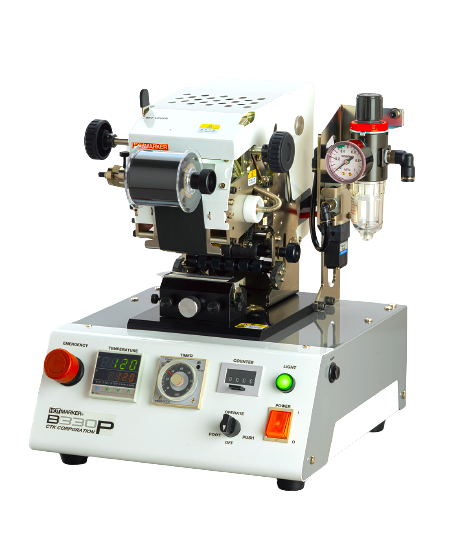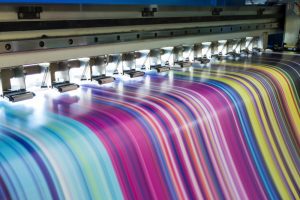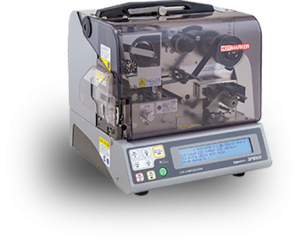Custom Cable Ties Printing: 4 Methods Explained
Custom printed cable ties are widely used across various industries and play a crucial role in bolstering efficiency, accuracy, and security. They provide an easy-to-use fastening system to secure cable bundles or other objects. To enhance their utility even further, many people opt for cable tie printing. This process involves customizing the tags or labels on the cable ties with text or graphics in order to identify them and differentiate their purpose from others easily.
In this blog post, we'll explore pros and cons of printing on cable ties using hot stamping method. In particular, we focus Hotmarker Direct Print Technology, the most reliable option for custom-printed cable ties. So let’s dive right into it!
Table of Contents
ToggleMethods of Cable Tie Printing
Hot Stamping
Cable tie printing is essential for organizing cords and cables. Hot stamping is a popular cable tie printing method that leaves a clean and precise print on the material. The process works by using a die piece called "type" to press pigment onto the surface of the cable tie.
With the right technique, hot stamping can be used to create intricate designs that withstand harsh environments and everyday wear and tear. This method is particularly useful for adding branding or identification to cable ties in industrial settings, where keeping track of equipment is crucial for safety and efficiency.
Overall, hot stamping offers a durable and efficient way to label and organize cable ties, making it a go-to choice for many professionals.

CTK's Hot Stamping Machine, The latest model, B330P (Coming Soon)
Cable Tie Printing Example
Process of Hot Stamping
Hot stamping is a popular technique for customizing a wide range of materials. Custom printed cable ties, in particular, can benefit from this method to make them stand out in any application. The hot stamping process works by using heat and pressure to transfer a design onto a material.
・First, a custom type is created with the desired logo or design.
・The type is heated and pressed onto a foil, which in turn releases the design onto the cable tie.
・The result is a high-quality, permanent custom print that is durable and can withstand tough industrial environments.
From branding to identification, hot stamping is an effective way to add a professional touch to cable ties.
Advantages
Hot printing is an innovative technique that provides numerous advantages when it comes to printing cable ties. Unlike traditional printing methods, hot printing uses heat to transfer marking foil onto the surface of the material.
This process ensures that the marking foil adheres firmly to the cable tie surface, making it more durable and resistant to scratches and fading. Additionally, since hot printing is a dry process, the cable ties can immediately be used right after printing, making it more efficient and cost-effective.
Moreover, this system offers the ability to print high-quality, vibrant colors with sharp details and various fonts, ensuring the final product is professional and attractive. Overall, using hot printing to print cable ties offers many significant advantages, making it an ideal choice for businesses that desire a high-quality, long-lasting product.
Disadvantages
Hot stamping requires direct contact to make markings, necessitating intervals between each print. Additionally, changing the printed text involves physically rearranging the types.
Thermal Transfer Printing
Thermal transfer printing technology is not suitable for marking on cable ties because the surface of cable ties do not fit into printing heads of thermal printers. Moreover, high temperature of the thermal head my cause deformation of the object.
Laser Printing
Laser printing utilizes a focused beam of light to produce markings on a substrate. Advantages of this method include its non-contact nature, eliminating the need for intervals between markings, a characteristic often seen in hot stamping. However, disadvantages are that it is typically limited to mono-color printing, there's a potential environmental impact due to emissions, and the initial installation costs can be significant.

Inkjet Marking
Inkjet marking employs liquid ink droplets directed from a nozzle to create images or text. The advantages of inkjet marking are its non-contact process and the absence of a need for pauses between markings, akin to laser printing and in contrast with hot stamping. On the downside, inkjet prints, when eroded, become entirely illegible, whereas imprints from hot stamping remain as indents. There are also potential environmental impacts due to emissions, and the maintenance costs tend to be high.

Hotmarker: A Reliable Solution for Custom Printed Cable Ties
Hotmarker is rapidly revolutionizing the cable tie industry and beyond. With its unique ability to deliver clean, consistent results on a variety of materials of various shapes and compositions, the Hotmarker B200/330 series is quickly becoming the preferred solution for cable tie printing applications.
No matter your organization’s specific needs, it's clear that this durable and reliable solution offers industry-leading performance for hot stamping applications. With Hotmarker, you can enjoy enhanced security, streamlining of workflows, and improved branding as compared to other solutions currently available on the market.



